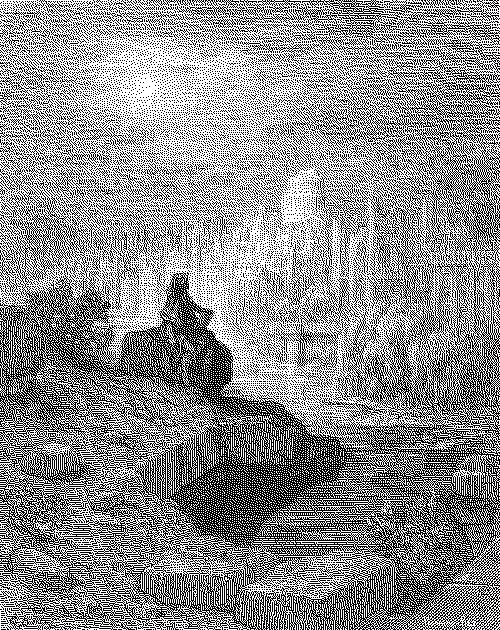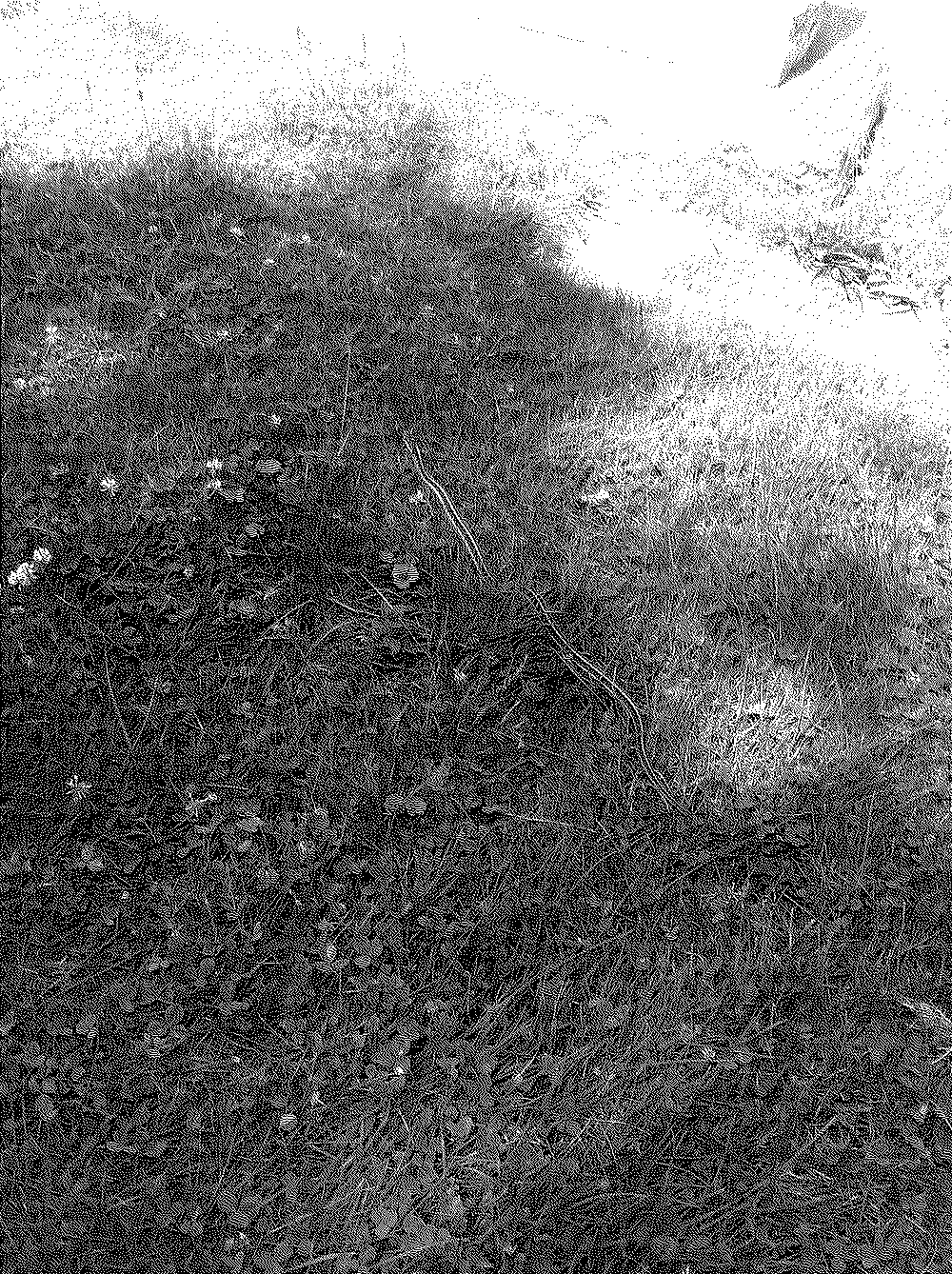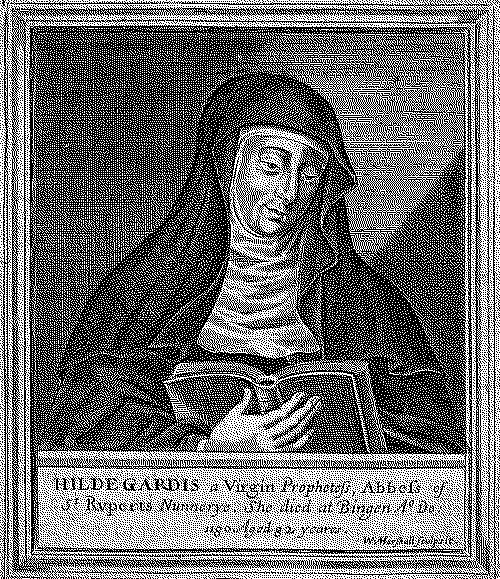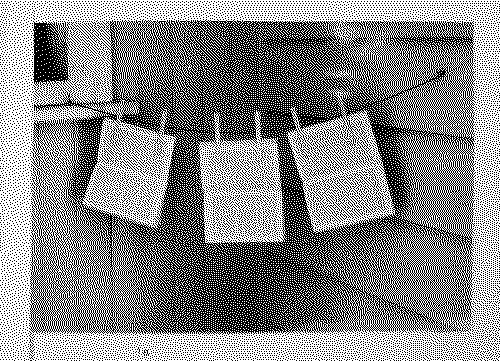Arcane Arts
On Sriwhana Spong and the Contemporary Art Thesis

LIBRARIANS WERE MONKS in medieval Europe. It’s the thought that carries me into the General Library of the University of Auckland. The books aren’t chained here, locked to the shelves as they were in monastic libraries, or cursed at the final page of inscription. No robes and tonsure either. The university librarian wears a Breakers jersey and a cap that reads Aotearoa.
They offer a warm greeting, and I repeat the thesis title: “‘Scirinz (a running sore): particular and ecstatic scripts of the body by mystic women in the Middle Ages and early Modern Europe’. Sriwhana Spong.” [1]. I had searched online using the University directory—Spong’s name produced a long list including entries about dance, the Walters Prize, art in the Asia-Pacific region, and books published through her dealer gallery in Tāmaki Makaurau. Spong is based in the United Kingdom, where her recent practice has orientated towards the women she refers to as ‘mystic writers’. This is a decisive shift in her work of the last decade, one that can be traced to her completion of a Master’s degree at the Piet Zwart Institute, Rotterdam, in 2013.
I met Spong in 2021, in London, as a fellow New Zealander sharing the years of Brexit and Covid. She was working as an artist and I as an early childhood teacher in a calamitous academy school. Between us, we attended to art and the failing state, and shared in the turmoil and joy that comes with residing in the English capital. Living in what often felt like the decline of the old city, the prophetic words of Victorian historian and politician, Thomas Babington Macaulay came to mind:
"…some traveller from New Zealand shall, in the midst of a vast solitude, take his stand on a broken arch of London Bridge to sketch the ruins of St Paul."
This peculiar vision was written in the same year of Te Tiriti o Waitangi, and envisioned the ‘New Zealander’ amid the ruins of a future London. The Victorians were fixated with ruins, their own most of all. Macaulay’s vision felt prescient amid the disaster-prone years of Brexit. With Britain (or I should say England) refusing their union with Europe, the architecture and collections of Britain's former empire came to feel more melancholic, even ruinous.
In the weeks before I returned home to Aotearoa, Spong and I visited some of the places we shared together: the Victoria and Albert Museum, Hyde Park and Kensington Gardens, and Brompton Oratory—a collection of Victorian civic and religious architecture that forms part of the pseudo-ruins of London. Within cavernous interiors, we learned about one another through a shared inclination for devotional space. Spong was brought up in the Pentecostal Church, while I was baptised a Christian before being receiving a Jewish education—separate ends of doctrine reaching back to ancient Palestine. It was hard to ascertain where our respective faiths lay now, but the art of Christianity formed common ground.
I’m back in Aotearoa now, and religious themes in art are once again ascendant. I find myself troubled by all the young artists wielding the Cross in gallery contexts. Cruel Optimism, the 2021 new artists exhibition at Artspace Aotearoa, exemplifies this emergent trend [2]. The exhibition—structured as a response to Lauren Berlant’s 2011 book by the same title—rode heavily on a Christian noir. Artists donned their figures with halos, spoke of the Lamb, and detailed apocalyptic visions of an Auckland riddled with demons. I wanted to know more about the personal theologies and beliefs of the artists involved, if these works were expressions of faith or ironic appropriations of its symbology reduced to playful posture and affect.
I suspect some of the participating artists lead religious lives. Despite being one of the most irreligious societies in the world (49.3% of non-believers according to the 2018 Census), Aotearoa is home to many communities of faith. Cruel Optimism revealed my own discomfort at the employment of religious iconography within the ironic postures of contemporary art. During a lengthy absence from the art world, I spent time in England’s Unitarian and Quaker communities, whose traditions are rooted in working-class and emancipatory politics. These spaces helped articulate my own relationship to faith, one orientated towards the metaphorical value of Judeo-Christian texts, and the traditions of Christian Socialism, recently exemplified in 'Cornel West on Why the Left Needs Jesus', an Atlantic interview with the activist and intellectual.
The image of Jesus I hold is different to the one propagated by the Christian Right. This Jesus alleviates poverty and condemns the sin of greed, is gentle until forced to drive the money changers from temple grounds. This is the Jesus who is martyred at the hands of an imperial occupation, all the while proffering non-violent resistance (minus the occasional whipping of financiers).
It was in the gap between this vision of religiosity and the one summoned by Cruel Optimism that my discomfort lay. A personal discomfort, sure, but one informed by the centuries of use and misuse of these signs and representations. There are histories at play in these forms, whether the image of the Cross or the weight of a monastic text, that demand care and attention.
It was hard to ascertain where our respective faiths lay now, but the art of Christianity formed common ground.
THE LIBRARIAN OFFERS me ‘Scirinz’. It is the only copy in their collection. The thesis title is a silver inscription on black leather binding. Silver and black, the words glistening like shards in the dark. I hold onto both ‘Scirinz’ and my own narratives of monastic struggle and care. It is not the first time I have been drawn to this kind of writing. I often think of the thesis-form as neglected text, routinely asking Masters and PhDs for their finished yet unpublished works. This is a monk’s impulse, caring for that which might be lost. I had asked Spong for hers some months earlier and was politely (though not entirely) declined: “You should go find it for yourself.”
I had my questions. Is contemporary art able to sincerely attend to faith? How does academic patronage inculcate the artist into the values of established power? Are theses the necessary and often missing adornments of contemporary art? In the silence of the reading room it becomes clear that these questions are my own, and do not serve Spong, or the book in my hands.
I speak “Scirinz” and turn the page. The word falters in my mouth, forcing my jaw to clench. Spong—trained in ballet—had promised a running sore and I feel sure I am going to get it. It’s a nauseous feeling, Scirinz, the word cuts one’s breath away.
There is real power in the women that Spong summons: Hildegard of Bingen and Teresa of Ávila—women mystics from medieval and early modern Europe respectively. Spong dwells in the company of these women, and writes a synthesis of careful scholarship, personal address, and poetic theology. She takes time to examine her mystic, and makes clear that her engagement isn’t an affect—it is a sustained communion over the course of years.

THERE'S A TENDERNESS HERE, as Spong embraces these pre-modern women as figures of guidance. The writing is close, intimate, delving between the personal and theoretical as she forms pacts with each. Here, heroines are held in essay form, and Spong offers herself in submission to those she admires. Apprentice comes to mind. Not in the contemporary, vocational sense, but in the truer, medieval genesis of the word. If Spong is attentive and practices humility, the Master will offer a clear path of ascension.
Improbable threads are held together by vignettes that link Spong’s body with the mystic, the most intense of which is a dangerous sighting in a Pittsburgh graveyard. She gasps through the academic prose, “snake!” It’s a visceral, demonic, and obviously biblical scene. Seeking guidance from the anthropologist, Lynne Isbell, Spong outlines Snake Detection Theory, a hypothesis of primate vision enhanced by the need to sight serpents [3]. Later, in another lyrical passage, spotting snakes is a pathway to the declarative gesture. Gestures are important for a dancer, and as Isbell attests, a developmental precursor to language. Spong is in awe of the words she inscribes, and shares a sense of wonder at their presence on the page.
Spong’s search for Hildegard is haunting. The artist traverses monastic ruins and shares a desire to crawl in and know Hildegard’s revelations from the inside, or at least from the view of her cell window. This is an embodied feminist practice, and delicately balanced as Spong responds to Hildegard’s age of divinely-sanctioned subjugation. Remember that (male) medieval theologians debated whether or not women could even have souls, an event remembered as the third Synod of Mâcon. This is oppressive theological terrain, and through the tyranny, Spong answers the call from silenced forebears.

ANTICIPATING CRITIQUES of the mystic, Spong attends to the science. Researchers from the University of Munich discovered “as high an electromagnetic energy source as exists anywhere in Europe” in Hildegard’s cell [4]. Spong delves into the possible implication of this finding and the quality of Hildegard’s revelations, asking “was it this concentration of electromagnetic energy that informed her visions so alive with starbursts and fire balls?” [5]. This measurable scientific phenomenon is recast as a divine presence, as dramatic changes in the electromagnetic field—such as may have occurred when Hildegard entered or left her cell in the course of her monastic routine—could have led to cognitive aberrations, and perhaps, enhanced spiritual experiences. This is a kind of evidence. Its inclusion asks if one might detect the divine without the attendant revelation.
Contained within this eloquent academic address is Spong’s own journey, which reaches me most. In a moment, she is experiencing the burdens of banal racism—“where are you from?” In another, she is a teenager watching the moon from her bed, thoughts tied to the biblical passages of the Song of Songs, a “love poem with no religious implication.”[6]
It can be hard to stay with Spong on her pilgrimage. The research slips and slides between Pittsburgh graveyards and warm tropical nights in Bali. She explores the tensions that arise from her shared Pākehā and Balinese heritage, and with the guidance of Teresa of Ávila, gestures towards reconciliation. Imagining her many islands, Spong proclaims an inward journey that travels away from nation states.
‘Scirinz’ travels across many planes of being and knowing—and in doing so, extolls the capacity of thought to carry us beyond our temporal selves. Spong has learnt to conjure with the academic text, and attained an arcane body that resides in academia. After reading ‘Scriniz’, stepping out onto the campus quad feels vaguely profane. Vending machines with demonically-styled drinks and Shadows Bar (a notorious student dive) are unsettling against the light that accompanies divine text.
THE VOICE OF MY MOTHER creeps in—my reliable critic. She doesn’t think one can receive a thesis and asks that I engage with the artist’s exhibition practice. There are attendant works here: a hook but no fish (Govett Brewster Art Gallery, 2017-18), having-seen-snake (Michael Lett, 2017), and Ida-Ida (Spike Island, 2019), film and performance that manifest Spong’s mystic women in art and gallery contexts. I tell my internal mother that art writing can exist by itself and as itself too. In reading ‘Scirinz’, I had set out to explore a different address from a familiar artist, as well as a phenomenon in contemporary art—the academic thesis. This literary form’s promise of an original contribution to knowledge sits as a material counterweight to the often ephemeral space of contemporary art, and marks the centuries-long drift away from the workshop and into the university. Art isn’t just found in the gallery or studio, but on the shelves of the campus library.
In searching for academic arts, a lauded (and local) champion of the thesis form emerged. I didn’t know of Malcolm Ross (1948-2003), and only recently learned about his contribution to the lineage of the art thesis in Aotearoa. Ross worked in a mode and moment on the cusp of what we might consider ‘contemporary’ art, exploring the themes and methodologies that would occupy the nation’s first generation of conceptual artists.
Like Spong, Ross was an alumnus of the Elam School of Fine Arts, studying under the much-mythologised tutelage of Colin McCahon and Jim Allen—who was then establishing a pioneering and experimental sculpture department. It was a different school back then: smaller, free, and home to a laddish drinking culture. Revered by his peers and admired by McCahon (their friendship formed through art and alcohol), Ross was seen as an emerging and distinguished talent in his cohort. Despite the reputation he gained at Elam, Ross ceased exhibiting after his Honour’s year. Sensitive and burdened with struggles, he worked tirelessly in the studio and is remembered by contemporaries as a recluse [7]. In the manner of his artistic hero, Marcel Duchamp, Ross chose to withdraw from the art world. In-lieu of the chessboard, he retrained as a librarian after art school—for “he regarded libraries as sacrosanct.” [8].
Ross’ artistic legacy is materially elusive. A few paintings exist here and there, but the primary record of his artistic life exists in twelve boxes of unresolved artistic ephemera kept at E.H. McCormick Library at the Auckland Art Gallery Toi o Tāmaki. The early crescendo of Ross’ artistic output is his 1971 Honour’s thesis, ‘Untitled (or A++)’, a masterpiece of the form.
ANOTHER TRIP to the library would be required, this time wearing white gloves and under the supervision of a specialist librarian. Ross’ thesis is kept in the University of Auckland’s Glass Case, alongside first editions by W.B. Yeats and Thomas Hardy. It’s quite the laurel for a little-known local figure. I prepared myself by reading Matthew Robert Plummer’s excellent and biographically-attentive MA thesis, ‘Legendary Obscurity: the Working Life of Malcolm Ross’ (2011)—another dignified piece of post-graduate research worthy of mention. The specialist librarian removed the bound pages from the store of English poetry, and placed it in my gloved hands. The pages are worn with signs of other (ungloved) fingers—a fray on the paper’s edge, erased notations, and even a dog-ear above a favoured passage. I wondered who of New Zealand’s artistic canon had made this pilgrimage? At least a few are surely needed to garner a reputation.
The reading of Ross’ thesis became a cult inculcation at Elam in the years after its completion, infamously referenced in a slogan composed by Richard Woolf in the 1973 student publication, ‘Elam S(p)eed’: Have you read Malcolm Ross’ thesis yet? The thesis became a rallying cry for a new mode of practice, one grounded in tenets of conceptual and post-object practice. At the time, the key institutional battle was the mandatory teaching of Nicolas Poussin which students felt was unjustifiable in a modern art school. This was the art-historical context that informed Ross’ own irreverent relationship to art history.
Unlike the embattled modernists of Elam, I adore Poussin’s pastel-toned neoclassicism and would have probably enjoyed the mandatory lectures. During my own time at Elam in the late 2000s I enrolled in ARTHIST 103: Art and the City in Renaissance Italy and thought a solemn love of Renaissance painting would see me in good stead. I was reprimanded with a C- at the end of the course, and informed of an “absence of core English writing skills.” This rejection initiated a decade of suspicion towards art historical departments, and affirmed a belief that good art history is more likely to be found in an artist’s studio. This appears to be Ross’ view in ‘Untitled (or A++)’ as he shrugs off the academic for a personal address.
The thesis wields a homespun and improvisational mentality towards a familiar art historical canon, dissected and repurposed with lean Duchampian tools. There is a revealing passage documented in Plummer's thesis in which Ross identifies as a “sticks and string man”, the title in reference to his contrived sculptural sensibility, nicely summing up the artist’s clunky immediacy in ‘Untitled (or A++)’. Through the written text, Ross consistently championed the conceptual tenets of idea over form, and concept over output.

SINCE HIS PASSING in 2003, Ross’ thesis has held the posthumous honour of residing within the Glass Case. The artist's influential submission is now kept alongside the first editions of Romantic poetry. The librarians have elevated ‘Untitled (or A++)’ towards canonical status, led perhaps by the influential advocacy of Ron Brownson, Douglas Wright, and Paul Hartigan. I am drawn to the role of the advocate, and try to shout loudly for the things that seem important and overlooked. This captures my feeling for ‘Scirinz’, and I now routinely speak the slogan: Have you read Sriwhana Spong’s thesis yet?
I wondered if ‘Scirinz’ would make it to the Glass Case one day, and who would be the inheritor(s) of Spong's mystic revival? I could see the murmurings of an emergent generation willing to know in other, more transcendental ways. It's an exciting thought, an influence that has yet to announce itself. And it is tempting to dream of new mystic women, enriched souls making the pilgrimage to ‘Scirinz’ and holding the change.
During the Middle Ages, artists were trained in workshops with strict skill-based hierarchies culminating in a Master that was commissioned by religious and aristocratic authorities. While my monk’s delusion for spiritually serious art only goes so far, simple contrasts do help us to remember where we stand. In the years that separate the medieval and contemporary artist, power has consistently passed through institutional frames. While today’s University offers the promise of critical thought, this emphasis on reflexivity ultimately fails to circumvent the sociological conditioning of art education’s dominant patron. The artist (and person for that matter) is always subjected to the indoctrination of their education, a truth that fuelled the student movements of the 1960s. Speaking in the revolutionary air of 1966, Allan Kaprow claimed that the “systemization” of arts academic training “invariably killed the magic [of art] and has broadcast false or dull values.” [9]. I tend to agree with Kaprow, and nurse suspicions against art’s academic agenda.
This was the essay—art versus academia—that I intended to write when I checked ‘Scirinz’ out from the library. But I left my enquiry at the gates and forgot my purpose. Thank goodness. Art should not be an appendage to an argument, and my wandering found its own ending in academic redemption.
THE THESIS FORM can be a worthy and beautiful contribution to art, and art itself if done right. Spong’s transcendence is achieved through the revival of past heroines, while Ross rallied the emergent sensibilities of post-object practice, and held true to his mischief. Like the locked tomes of monastic libraries, these texts are now objects of power, in varying stages of the librarian monks' care and protection. Quietly, and with the proper appointment, they exert subtle and profound influence on the world.
I hold true to the states of artistry—curiosity, tactility, errantry. This final word—errantry—is one spoken by Spong with a rhythm. Errantry is the condition of travelling or roving about. And in the word’s medieval genesis, errantry is a knight’s search for chivalrous adventure. The word holds implications of a calling, a quest, and a desire to break out into the unrestrained world.
The Doctorate is an invention of the Middle Ages, a transformation imagined with the investiture of an honorific by the earliest universities. ‘Scriniz’ is certainly all that plus added revelation. Spong affirms that powerful knowledge can be achieved with academic benefactors, and like Ross, speaks to the capacity of artists to transcend the structures they find themselves in. It is a bewildering act, one that plays at the limit of our understanding whilst honouring a neglected past. It elicits more from us than we can make sense of, and that is a higher purpose.
Footnotes:
- 1-Spong’s doctorate was completed in 2021 through the University of Auckland under the supervision of Simon Ingram and Kate Briggs. Her thesis is available to read here as a PDF on the University’s Research Space.
- 2-For a full treatment of the exhibition, read Samuel Te Kani’s Circuit review.
- 3- Lynne A. Isbell, The Fruit, the Tree, and the Serpent (Cambridge, MA: Harvard University Press, 2009, 95.
- 4-Matthew Fox, Illuminations of Hildegard of Bingen (Vermont: Bear & Company, 2002), 46
- 5- Sriwhana Spong, ‘Scirinz (a running sore): particular and ecstatic scripts of the body by mystic women in the Middle Ages and early Modern Europe’ (Auckland: University of Auckland, 2021), 34.
- 6- Spong, 34.
- 7- Matthew Robert Plummer, ‘Legendary Obscurity: the Working Life of Malcolm Ross’ (Wellington: Victoria University of Wellington, 2011), 12.
- 8- Ron Brownson in Plummer, 19.
- 9- Jerome J. Hausman, ‘Art Education in Higher Education: A Personal View’, Visual Arts Research, (Spring 2009): 106-113
2022-02-11